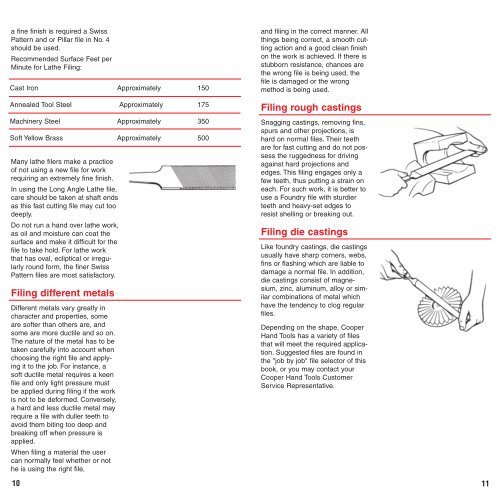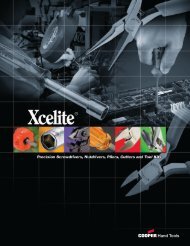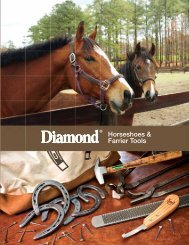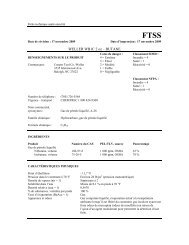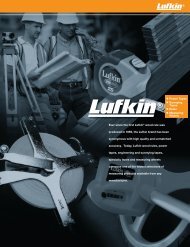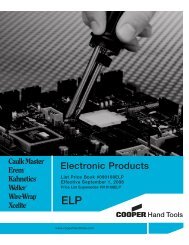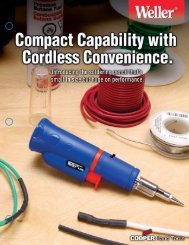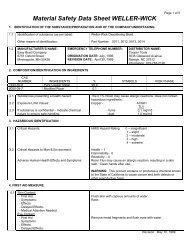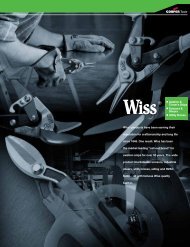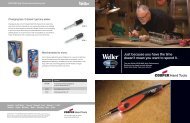THE GUIDE TO FILES AND FILING - Evenfall Studios
THE GUIDE TO FILES AND FILING - Evenfall Studios
THE GUIDE TO FILES AND FILING - Evenfall Studios
Create successful ePaper yourself
Turn your PDF publications into a flip-book with our unique Google optimized e-Paper software.
a fine finish is required a SwissPattern and or Pillar file in No. 4should be used.Recommended Surface Feet perMinute for Lathe Filing:Cast Iron Approximately 150and filing in the correct manner. Allthings being correct, a smooth cuttingaction and a good clean finishon the work is achieved. If there isstubborn resistance, chances arethe wrong file is being used, thefile is damaged or the wrongmethod is being used.Annealed Tool Steel Approximately 175Machinery Steel Approximately 350Soft Yellow Brass Approximately 500Many lathe filers make a practiceof not using a new file for workrequiring an extremely fine finish.In using the Long Angle Lathe file,care should be taken at shaft endsas this fast cutting file may cut toodeeply.Do not run a hand over lathe work,as oil and moisture can coat thesurface and make it difficult for thefile to take hold. For lathe workthat has oval, ecliptical or irregularlyround form, the finer SwissPattern files are most satisfactory.Filing different metalsDifferent metals vary greatly incharacter and properties, someare softer than others are, andsome are more ductile and so on.The nature of the metal has to betaken carefully into account whenchoosing the right file and applyingit to the job. For instance, asoft ductile metal requires a keenfile and only light pressure mustbe applied during filing if the workis not to be deformed. Conversely,a hard and less ductile metal mayrequire a file with duller teeth toavoid them biting too deep andbreaking off when pressure isapplied.When filing a material the usercan normally feel whether or nothe is using the right file,Filing rough castingsSnagging castings, removing fins,spurs and other projections, ishard on normal files. Their teethare for fast cutting and do not possessthe ruggedness for drivingagainst hard projections andedges. This filing engages only afew teeth, thus putting a strain oneach. For such work, it is better touse a Foundry file with sturdierteeth and heavy-set edges toresist shelling or breaking out.Filing die castingsLike foundry castings, die castingsusually have sharp corners, webs,fins or flashing which are liable todamage a normal file. In addition,die castings consist of magnesium,zinc, aluminum, alloy or similarcombinations of metal whichhave the tendency to clog regularfiles.Depending on the shape, CooperHand Tools has a variety of filesthat will meet the required application.Suggested files are found inthe "job by job" file selector of thisbook, or you may contact yourCooper Hand Tools CustomerService Representative.10 11


